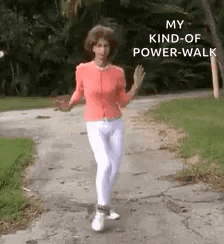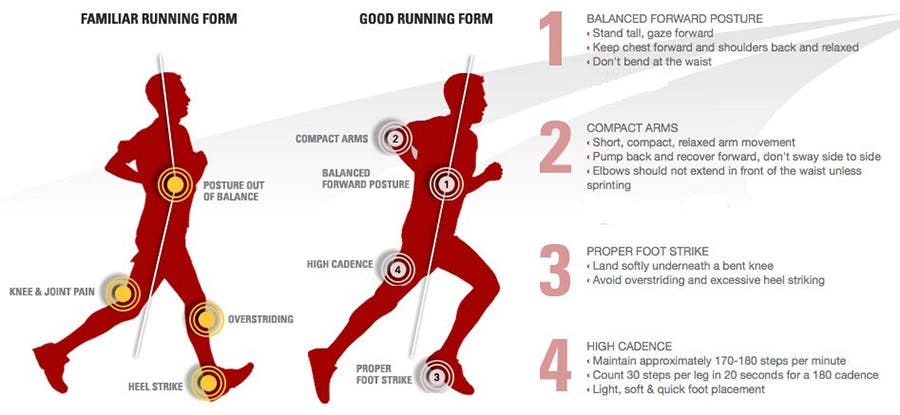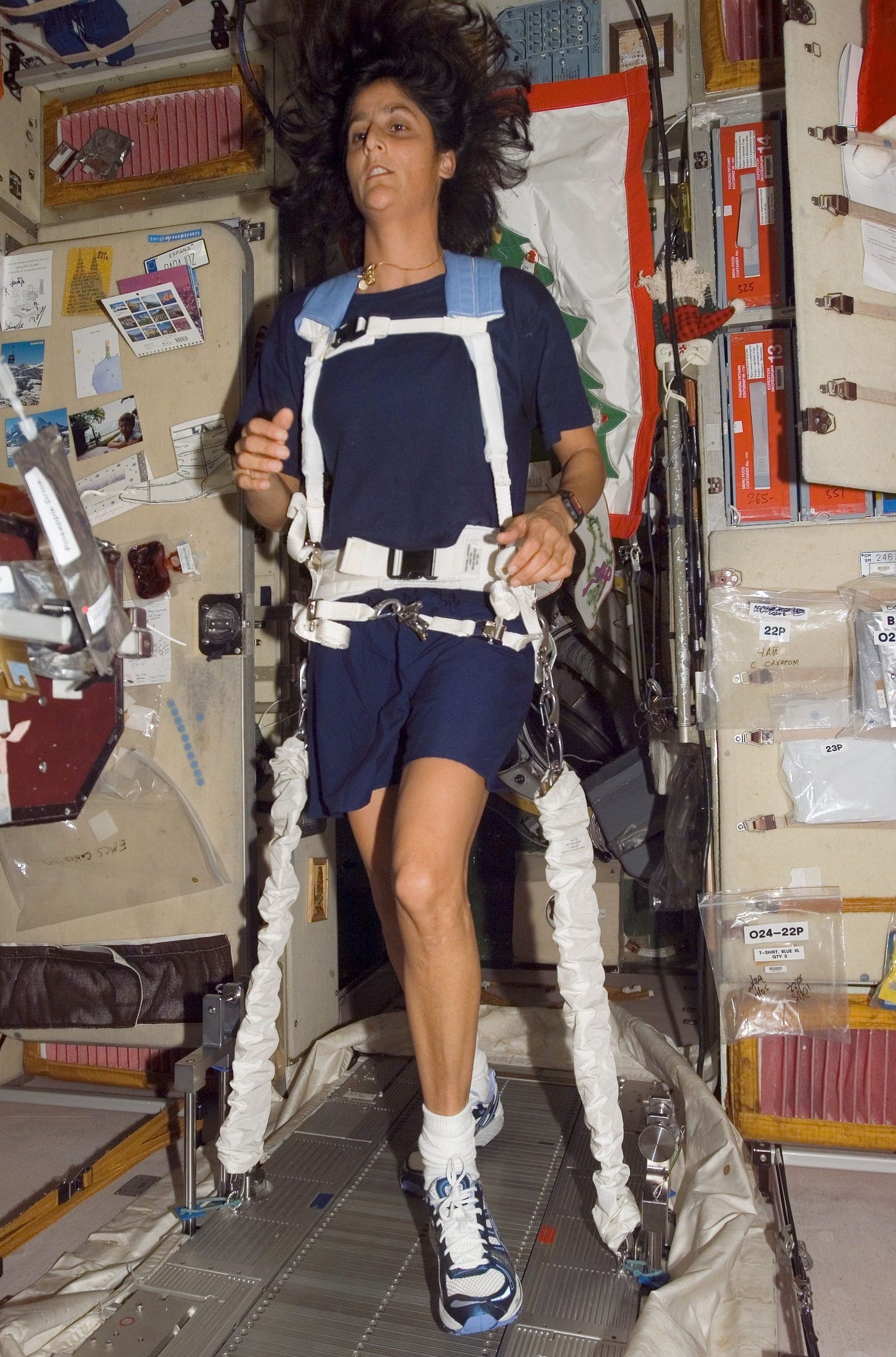What Happens When a Run Coach Gets His Form Analyzed?
Walking is Killing Your Shoes + I Found the Secret to Calf Raises + Running Miles Above Earth
Your Cheat Sheet
👟 The Hidden Miles That Ruin Your Shoes
🦵 I Found the Secret to Calf Raises (That Doesn’t Wreck Your Spine)
🌎 Running Miles Above Earth (random but true run stories)
The Hidden Miles That Ruin Your Shoes
I was standing in the kitchen, waiting for the microwave to finish my lunch, when it hit me.
“I wear my running shoes all the time—but I only log the runs. What about everything else — Errands, gym time, and walking around with the kid?“
That volume isn’t invisible… its just not counted and could cause major issues later. So I jumped onto the internet to do research and yeah… I’m def wearing my running shoes when doing non-running activities. Here’s what I found.
I’ve always tracked my runs. I log workouts and even swap out shoes in Strava. But all those other times, like hours on my feet, steps I never notice, and it never made the spreadsheet.
And yeah, walking doesn’t hit shoes as hard as running because it’s different forces and it’s lower impact. But foam doesn’t reset overnight. It compresses, recovers a bit, and then compresses again. Day after day. And most of us wear our runners/trainers for everything.
This is applicable to people:
Especially if you only rotate one or two pairs.
Especially if you’re in soft, high-stack, squishy stuff.
Especially if you’re rocking super shoes to brunch (I’ve seen people doing this and yeah… kinda gross but do you!)
My partner can feel when a shoe is worn out. I cannot! Am I weird? Is she weird? Not sure because the science says otherwise. Your brain adapts, form shifts and you just stop noticing. This is until your knees hurt or your foot starts screaming at you mid-run, and you wonder what changed, going “why do I have bad luck with injuries”.
So here’s a quick fix you can use right now because it’s silly simple. Once a week, sit down and add a rough estimate of walking miles to each pair. It doesn’t have to be precise, and please don’t spend more than 90 seconds on this. Or if you’re like my partner, downgrade your everyday running pair early to become “walking only shoes” if you’re not tracking at all. Save your fresh shoes for actual running.
That’s it.
I know, it’s not groundbreaking, but somehow I missed it for years. Are you accidentally killing your running shoes… by not running in them?
What Happens When a Run Coach Gets His Form Analyzed?
The Mirror You Didn’t Ask For
I thought I was good. Like, solid B+ run form. Not elite, but I coach people for a living—shouldn’t I at least look like I know what I’m doing?
Turns out… no. Not always.
The slow-mo footage felt like watching a dream where you’re running but somehow never move. Helicopter arms. Wrist flicks. Forward lean like I was chasing a bag of groceries downhill. I instantly saw the disconnect—what I felt like I was doing vs. what was actually happening. The camera doesn’t lie, and apparently, neither does Ben the physio.
Small Fixes, Big Ego Hits
The fix wasn’t a 12-step plan. It was one cue: lift your damn legs. Keep the motion underneath me, not swinging out in front. Add some trunk stability. Stop flailing like a drunk puppet.
At first, it felt forced. Robotic. Like I was trying to learn how to walk again. But two months later? No wrist flick. Less twist. Slightly higher cadence. The change worked—but not without moments where I questioned everything I thought I knew about form and coaching.
Even now, I still catch myself wanting to go back to old habits. Comfort’s sneaky like that.
Coaching Myself Was the Hardest Part
I used to think being a coach meant you had all the answers. But now I know being a good coach means asking better questions—including the hard ones… to yourself.
Do I practice what I preach? Do I rest like I tell my athletes to? Do I stop chasing the perfect stride and instead focus on the 1% gains that actually matter?
This whole experience reminded me that self-awareness is a muscle. And watching your own stride is like flexing that muscle in front of a mirror when you’ve been skipping gym day for a month. It hurts. But it’s necessary.
Watch, read and listen to the full episode on your next run or workout here.
🦵I Found the Secret to Calf Raises (That Doesn’t Wreck Your Spine)
I have achilles issues when I run too fast or too far too quickly. It lasts for months and is quite annoying. Taking time off doesn’t help as the achilles tendon needs blood /movement and doesn’t respond well to time off (the saying “motion is lotion” is so damn applicable to runners, it hurts).
The fix? Lots of weighted single-leg calf raises.
The problem? Once you do them for years, your calves need a lot more weight to see the benefits, so I have to load up on the back squat or Smith's machine, and it’s starting to be too much for my neck/shoulders causing other second and third order effects (hello Chiropractors!)
Like most gyms, I don’t have a specific calf raise machine or a seated calf raise machine (so annoying!!). So I dug deep into the internet and found these alternatives to load up my calves without messing up my neck.
Check them all out here.
🌎Running Miles Above Earth
Random But True Running Stories\
Did you know that on the International Space Station, astronauts clip themselves to the TVIS/COLBERT treadmill with elastic bungees so they can run without floating away? Yeah, I kinda knew this from the random videos I would see of astronauts in space, but I didn’t know the exact details, which are quite impressive and very VERY necessary for astronauts ’ health and to not destroy the ship!
The vibrations are isolated so delicate micro-gravity experiments stay undisturbed, and crews routinely log 5-10 km sessions to protect bone density. The view? A sunrise every 45 minutes if you time your workout right.








